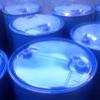| Anmol Chemicals is the pioneer manufacturers of Sodium Stearate USP NF BP Ph Eur, Pharmaceutical Excipients Food & Flavor chemicals in India. We offer Halal and Kosher Sodium Stearate USP NF BP Ph Eur made in an ISO9001, ISO22000 (FSSC22000) cGMP and GLP certified facility. Our group has several manufacturing facilities spread across the world, supported by toll manufacturers and representatives in UAE, Europe, USA, China and has several associated manufacturing facilities spread across India. All the Information on Physics, Chemistry, Applications, Uses and Technology on Manufacture of Sodium Stearate USP NF BP Ph Eur is in these pages. |
| The units in the group have one or more of the certifications like FDA GMP, ISO 9001, ISO 22000, HACCP, REACH, Kosher & Halal and DMF support is available. |




Sodium Stearate USP NF BP Ph Eur Manufacturers
CAS Number 822-16-2
Sodium Stearate USP NF BP Ph Eur SDS GHS, MSDS Sheet of Manufacturers
Sodium Stearate BP Ph Eur Specifications
Action and use: Excipient
DEFINITION
Mixture of sodium salts of different fatty acids consisting mainly of stearic (octadecanoic) acid [C17H35COONa] and palmitic (hexadecanoic) acid [C15H31COONa].
Content:
sodium: 7.4 per cent to 8.5 per cent (dried substance);
stearic acid in the fatty acid fraction: minimum 40 per cent;
sum of stearic acid and palmitic acid in the fatty acid fraction: minimum 90 per cent.
CHARACTERS
Appearance: White or yellowish, fine powder, greasy to the touch.
Solubility: Slightly soluble in water and in ethanol (96 per cent).
IDENTIFICATION
First identification C, D.
Second identification A, B, D.
A. Freezing point Minimum 53°C for the residue obtained in the preparation of solution S (see Tests).
B. Acid value 195 to 210, determined on 0.200 g of the residue obtained in the preparation of solution S dissolved in 25 ml of the prescribed mixture of solvents.
C. Examine the chromatograms obtained in the assay of stearic acid and palmitic acid.
Results The 2 principal peaks in the chromatogram obtained with the test solution are similar in retention time and size to the 2 principal peaks in the chromatogram obtained with the reference solution.
D. Solution S gives reaction of sodium.
TESTS
Solution S: To 10.0 g Sodium Stearate add 100 ml of peroxide-free ether and 80 ml of acetic acid. Boil under a reflux condenser until dissolution is complete. Allow to cool. In a separating funnel, separate the aqueous layer and shake the ether layer with 2 quantities, each of 8 ml, of acetic acid. Combine the aqueous layers, wash with 30 ml of peroxide-free ether and dilute to 100 ml with distilled water (solution S). Evaporate the ether layers to dryness on a water-bath and dry the residue at 100-105C.
Acidity or alkalinity: Suspend 2.0 g in 50 ml of previously neutralized ethanol (96 per cent). Heat under reflux to dissolve and add 3 drops of phenolphthalein solution; the solution is colourless. Not less than 0.60 ml and not more than 0.85 ml of 0.1 M sodium hydroxide is required to change the colour of the indicator.
Chlorides: Maximum 0.2 per cent.
Sulphate: Maximum 0.3 per cent.
Nickel: Maximum 5.0 ppm.
Atomic absorption spectrometry.: To pass the test.
Loss on drying: Maximum 5.0 per cent.
Microbial contamination: Total viable aerobic count not more than 103 micro-organisms per gram, determined by plate count. It complies with the test for Escherichia coli.
Sodium Stearate USP NF Specifications
Octadecanoic acid, sodium salt.
CAS Number 822-16-2
Sodium Stearate is a mixture of sodium stearate (C18H35NaO2) and sodium palmitate (C16H31NaO2), which together constitute not less than 90.0 percent of the total content. The content of C18H35NaO2 is not less than 40.0 percent of the total. Sodium stearate contains small amounts of the sodium salts of other fatty acids.
Identification:
A: When heated, it fuses. At a high temperature it decomposes, emitting flammable vapors and the odor of burning fat, finally leaving a residue that, when moistened with water, is alkaline to litmus paper, effervesces with acids, and colors a non-luminous flame intensely yellow.
B: Dissolve 25 g in 300 mL of hot water, add 60 mL of 2 N sulfuric acid, and heat the solution, with frequent stirring, until the separated fatty acid layer is clear. Wash the fatty acids with boiling water until they are free from sulfate, collect in a small beaker, and warm on a steam bath until the water has settled and the fatty acids are clear. Allow the acids to cool, pour off the water layer, then melt the acids, filter into a dry beaker while hot, and dry at 105 for 20 minutes: the solidification temperature of the fatty acids is not less than 54.
Acid value of fatty acids: between 196 and 211, determined on 1 g of the fatty acids obtained in Identification test B.
Iodine value of fatty acids: not more than 4.0, determined on the fatty acids obtained in Identification test B.
Acidity: To pass the test. (between 0.28% and 1.2% as stearic acid).
Loss on drying: Tare a beaker containing about 1 g of washed sand, previously dried at 105 , add about 500 mg of Sodium Stearate, and again weigh. Add 10 mL of alcohol, evaporate the mixture at about 80 to dryness, and dry at 105 for 4 hours: it loses not more than 5.0% of its weight.
Alcohol-insoluble substances: Reflux 1.0 g with 25 mL of alcohol: it dissolves completely, and the resulting solution is clear or not more than slightly opalescent.
Sodium Stearate USP NF BP Ph Eur Manufacturers
Anmol Chemicals
S-8, SARIFA MANSION, 2ND FLANK ROAD, CHINCHBUNDER, MUMBAI 400009, INDIA
TEL: (OFFICE) 91-22-23770100, 23726950, 23774610, 23723564. FAX: 91-22-23728264
e-mail: anmolc@mtnl.net.in

Fracture Diverting Agent, Ferric Chloride Hexahydrate, Malic Acid, Skatole & Indole, Potassium Bicarbonate & Carbonate, Sodium Caprylate, Steartic Acid, Tartartric Acid
Exports to USA, Canada, UAE, Dubai, South Africa, Tanzania, Kenya, Nigeria, Egypt, Uganda, Turkey, Mexico, Brazil, Chile, Argentina, Europe Netherlands, Italy, Spain, Germany, Portugal, France, Malaysia, Indonesia, Thailand, Vietnam, Korea, Japan, etc.
Copyright and Usual Disclaimer is Applicable.